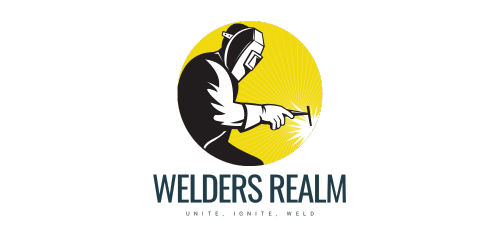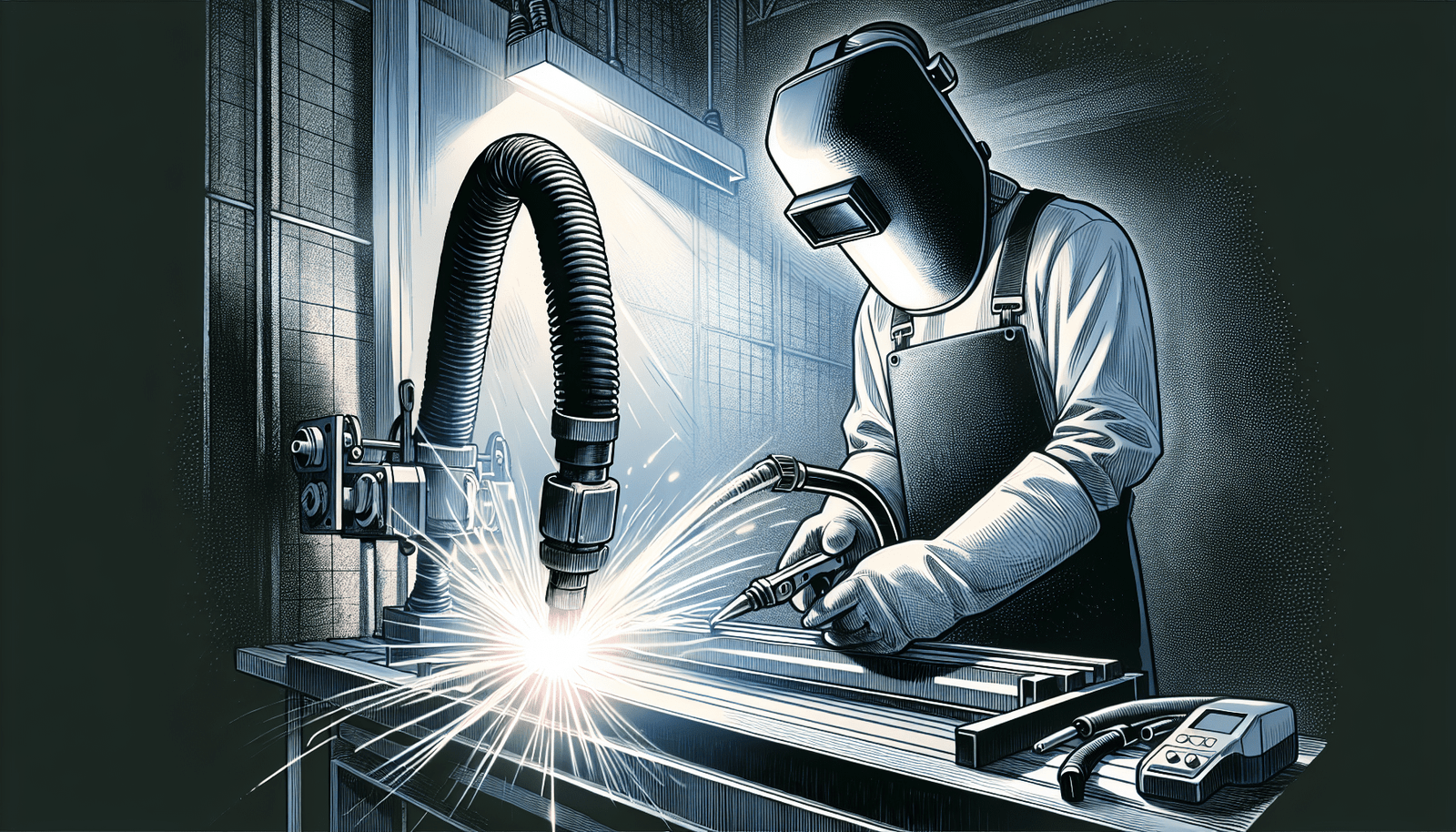Are you a welding guru or someone in search of welding product reviews? If so, you’ve come to the right place! In this article, we will provide you with a friendly and approachable guide on how to repair a fire escape. Whether you’re looking for step-by-step instructions or simply want to understand the process better, we’ve got you covered. So grab your welding gear and let’s dive into the world of fire escape repair together!
Understanding Fire Escapes
Fire escapes play a crucial role in ensuring the safety of individuals during emergencies such as fires. These structures are specifically designed to provide a safe and efficient escape route from buildings, especially in situations where traditional exits may be inaccessible. Understanding the role and importance of fire escapes can help you appreciate the significance of properly maintaining and inspecting these structures.
Role and Importance of Fire Escapes in Safety
Fire escapes serve as a lifeline, providing a quick and safe means of egress during emergencies. They offer an alternative exit route when interior stairwells may be blocked or filled with smoke. By utilizing fire escapes, occupants can evacuate a building promptly, reducing the risk of injury or loss of life.
Moreover, fire escapes act as a means of access for firefighters and other emergency personnel. These structures enable easy entry to upper levels of a building, allowing for effective fire suppression and rescue operations. Without fire escapes, the ability of emergency responders to carry out their duties efficiently would be severely hindered.
Components of a Fire Escape
To understand fire escape repair and maintenance, it is important to familiarize yourself with the various components of these structures. Fire escapes typically consist of several key elements:
Staircase: The central feature of a fire escape, the staircase provides the means to descend or ascend between different levels of a building.
Landings: These platforms are located at intervals along the staircase, allowing individuals to rest or change direction if necessary.
Bolts and Hardware: Bolts secure the different components of the fire escape together, allowing for stability and reliability.
Railings: Railings provide support and guide individuals along the staircase, helping to prevent accidents and falls.
Ladders: In some fire escape designs, ladders are incorporated to allow for easy access to different levels.
Understanding the various components of a fire escape will aid in identifying potential issues and carrying out effective repairs.
Common Materials Used in Fire Escapes
Fire escapes are frequently constructed using durable and weather-resistant materials to ensure their longevity and reliability. Some commonly used materials include:
Steel: Steel is a popular choice due to its strength and resistance to impact and fire.
Aluminum: Aluminum is lightweight yet sturdy, making it an excellent choice for fire escapes where weight is a concern.
Wrought Iron: Wrought iron offers both elegance and durability, making it a common choice for fire escape railings and decorative elements.
Galvanized Steel: Galvanized steel is steel coated with a layer of zinc to protect against corrosion, extending the lifespan of the fire escape.
Understanding the materials used in fire escape construction will enable you to better assess their condition and carry out appropriate repairs and maintenance.
Identifying Common Fire Escape Problems
Regular inspection and maintenance are crucial for ensuring the safety and effectiveness of fire escapes. Being able to identify common problems will help you address them promptly and prevent the escalation of issues.
Corrosion and Rust
One of the most common problems found in fire escapes is corrosion and rust. Over time, exposure to the elements can cause the metal components of a fire escape to deteriorate. Signs of corrosion and rust include discoloration, pitting, and flaking of the metal surfaces. It is essential to address these issues promptly to prevent further damage and ensure the structural integrity of the fire escape.
Loose or Missing Bolts
Another issue commonly encountered in fire escapes is loose or missing bolts. These fasteners are essential for holding the various components of the fire escape together. Loose bolts can compromise the stability and safety of the structure, while missing bolts may lead to complete failures in critical areas. Regularly inspecting and tightening bolts is crucial for maintaining the structural integrity of a fire escape.
Damaged or Broken Components
Components such as stair steps, railings, and ladders can become damaged or broken due to wear and tear, accidents, or natural disasters. These damaged parts can pose safety hazards and limit the effectiveness of the fire escape. Identifying and replacing these components promptly is essential to ensure that the fire escape functions as intended.
Blocked or Inaccessible Escape Routes
During routine inspections, it is vital to check for any obstructions or potential obstacles that may impede the use of the fire escape. Overgrown vegetation, debris, or storage items blocking the escape routes can hinder swift and safe evacuation during emergencies. Clearing these obstructions and ensuring unencumbered access to the fire escape is crucial for its proper functioning.
Routine Inspection of Fire Escapes
Regularly inspecting fire escapes is essential for maintaining their functionality and ensuring the safety of occupants. By incorporating routine checks into your maintenance schedule, you can identify and address any issues before they escalate.
Importance of Regular Fire Escape Checks
Routine inspections of fire escapes are crucial for several reasons. Firstly, they help identify any potential safety hazards and address them promptly. Secondly, inspections allow for early detection of minor damages, preventing them from developing into more significant issues. Lastly, regular checks ensure compliance with building codes and regulations related to fire escapes, helping you avoid potential fines and penalties.
Areas to Focus on During Fire Escape Inspection
When conducting a fire escape inspection, there are specific areas that warrant closer attention. These include:
Staircase and Landings: Carefully examine the condition of the stair steps and landings for signs of wear, damage, or deterioration. Pay attention to any loose or broken components and address them promptly.
Bolts and Hardware: Inspect the fasteners securing the different components of the fire escape and ensure they are tight and undamaged.
Railings: Check the stability and condition of the railings, ensuring they are secure and capable of providing support.
Ladders: If your fire escape includes ladders, inspect their structural integrity and ensure they are firmly attached to the other components.
By thoroughly assessing these crucial areas, you can catch any issues early and take appropriate corrective measures.
Tools Needed for Routine Checks
To carry out effective routine inspections of fire escapes, you may need several tools and equipment. These include:
Flashlight: A flashlight will help you properly inspect the fire escape, especially in poorly lit areas.
Hand Tools: Basic hand tools such as a wrench, screwdriver, and pliers may be necessary for tightening bolts or removing and replacing components.
Safety Equipment: As safety is paramount, ensure you have appropriate personal protective equipment (PPE) such as gloves, safety glasses, and a helmet.
Measuring Tape: A measuring tape will come in handy when assessing the dimensions of components or determining the required size of replacement parts.
By having the necessary tools readily available, you can efficiently carry out routine inspections and address any issues that may arise.
Fixing Minor Damages
In some instances, fire escape repairs can be performed as do-it-yourself (DIY) projects, particularly when dealing with minor damages. By familiarizing yourself with the suitable techniques and necessary steps, you can confidently tackle these repairs on your own.
DIY Techniques for Repair of Fire Escapes
Addressing minor damages on a fire escape may involve various DIY techniques, depending on the specific issue encountered. Some common repair techniques include:
Replacing Missing or Loose Bolts: If you notice any missing or loose bolts, you can easily replace them with suitable replacements or tighten them using a wrench or socket set.
Addressing Minor Paint Chipping or Corrosion: Minor paint chipping or superficial corrosion can be remedied by sanding the affected area, applying a rust inhibitor, and repainting it to prevent further deterioration.
Addressing Corrosion and Rust Issues
Corrosion and rust are common problems faced by fire escapes due to their exposure to the elements over time. It is crucial to address these issues promptly to prevent further damage and ensure the longevity of the structure.
Importance of Addressing Corrosion and Rust
Corrosion and rust can weaken the structural integrity of a fire escape, making it less reliable during emergencies. Addressing these issues is essential for preserving the safety and functionality of the escape route. Failure to mitigate corrosion and rust can lead to potential collapses or failures, putting occupants at risk.
Choosing the Right Anti-Rust Products
When addressing corrosion and rust, selecting the right anti-rust products is vital for effective treatment. Look for products specifically designed to inhibit rust and protect metal surfaces. Consider factors such as ease of application, durability, and compatibility with the material of your fire escape. Consult with professionals or research reliable products to ensure optimal results.
Steps in Treating and Preventing Corrosion and Rust
To treat and prevent corrosion and rust on your fire escape, follow these steps:
Surface Preparation: Thoroughly clean the affected area using a wire brush or sandpaper to remove any loose rust or corrosion. Make sure the surface is clean, dry, and free from debris.
Application of Anti-Rust Product: Apply the chosen anti-rust product according to the manufacturer’s instructions. This may involve brushing or spraying the product onto the affected area. Ensure even coverage and allow sufficient drying time.
Additional Protection: Consider applying a protective coating, such as a primer or paint, after the anti-rust treatment to further enhance the durability of the fire escape’s metal components.
Regularly inspect treated areas for any signs of reoccurrence and promptly address any concerns to maintain the effectiveness of the anti-rust treatment.
Replacing Damaged Parts
In cases where fire escape components are irreparably damaged, it is necessary to replace these parts to maintain the safety and functionality of the structure.
Identifying Irreparable Components
During routine inspections or repairs, you may come across damaged parts that cannot be effectively repaired. These may include severely corroded stair steps, bent or broken railings, or structurally compromised landings. Identifying these irreparable components is crucial to ensure they are promptly replaced.
Ordering the Correct Replacement Parts
When replacing damaged parts, it is essential to order the correct replacements to maintain the integrity of the fire escape. Refer to the manufacturer’s specifications or consult professionals to identify the exact specifications and dimensions required for the replacement parts. Ensure the replacement parts meet safety standards and regulations applicable to fire escapes.
Guides to Replace Damaged Parts
Replacing damaged parts on a fire escape may involve specific procedures or techniques. Consult manufacturer guidelines or seek professional advice when tackling such replacements. Ensure you have the necessary tools and equipment, and follow the instructions diligently to ensure proper installation of the replacement parts.
Hiring a Professional
While minor repairs and maintenance can often be performed as DIY projects, certain situations call for professional assistance.
When to Engage a Professional for Repair Works
Consider engaging a professional for fire escape repair works in the following scenarios:
Complex Repairs: If you encounter issues that are beyond your expertise or require specialized knowledge, it is advisable to seek professional assistance to ensure the repairs are carried out effectively and safely.
Extensive Damage: If the fire escape has experienced significant damage or deterioration, it is best to involve professionals who can thoroughly assess the structure and provide expert solutions.
Compliance and Certification: When repairs involve meeting building codes and safety standards, professionals with relevant certifications and experience are best equipped to ensure compliance.
Selecting the Right Professionals
When selecting professionals for fire escape repairs, consider the following:
Experience and Expertise: Look for professionals who specialize in fire escape repair and have a proven track record of successful projects.
Certifications and Licenses: Ensure the professionals you hire possess the necessary certifications, licenses, and insurance coverage to carry out the required repairs.
Reputation and Reviews: Research the reputation of the professionals and read reviews from previous clients to gauge their reliability and quality of work.
Take the time to vet potential professionals and obtain multiple quotes to ensure you make an informed decision.
Estimated Costs for Professional Help
The costs associated with hiring professionals for fire escape repair can vary depending on several factors, including the extent of the repairs needed, the complexity of the repair work, and the geographic location. It is recommended to obtain multiple quotes from reputable professionals to get a better understanding of the estimated costs for your specific project.
Routine Maintenance and Prevention
In addition to regular inspections and timely repairs, incorporating routine maintenance practices can greatly extend the lifespan and reliability of your fire escape.
Regular Cleaning Schedule
Maintaining a regular cleaning schedule for your fire escape is essential to remove debris, dirt, and other contaminants that can contribute to corrosion or obstruction of escape routes. Use mild cleaning agents and soft brushes to clean the different components, ensuring you do not cause any damage or scratches.
Treating Metal Surfaces to Prevent Corrosion
Preventive measures can greatly reduce the risk of corrosion on your fire escape. Regularly inspect metal surfaces for signs of damage or deterioration and address them promptly. Consider applying anti-corrosion coatings or paints designed for metal structures to create an additional barrier against the elements.
Inspecting Fire Escape after Extreme Weather Conditions
After extreme weather conditions, such as storms or heavy snowfall, it is essential to inspect your fire escape for any damage or displacement of components. The excessive weight of snow or the force of high winds can cause stress on the structure, compromising its integrity. Inspecting after extreme weather events ensures any necessary repairs are addressed promptly.
Safety Tips during Repairs
When conducting fire escape repairs, it is crucial to prioritize safety to prevent accidents or further damage. Follow these safety tips to ensure a secure working environment.
Appropriate Safety Gear during Repair Works
Always wear appropriate safety gear, including gloves, safety glasses, and a helmet, to protect yourself from potential hazards such as falling debris or sharp edges. Ensure you have proper footwear with good traction to prevent slips and falls.
Ensuring Stability of Fire Escape during Repair
Before starting any repairs, ensure the stability of the fire escape. If necessary, provide additional support or temporarily close off the area to prevent accidental access. Use caution when moving or working around components to avoid any unintentional movement that could compromise the structure.
Proper Disposal of Replaced Parts
When removing and replacing damaged components, ensure proper disposal of the old parts. Depending on your local regulations, this may involve recycling, disposal at a designated facility, or utilizing a professional waste management service. Proper disposal contributes to environmental sustainability and prevents potential hazards.
Staying Updated with Fire Escape Regulations
To ensure the safety and compliance of your fire escape, staying updated with fire escape regulations is crucial.
Understanding Local Building Codes
Familiarize yourself with the local building codes and regulations governing fire escapes. These codes specify requirements for design, construction, maintenance, and inspection of fire escape systems. Compliance with these regulations is essential to ensure the safety and legal compliance of your fire escape.
Ensuring Fire Escape Meets Safety Standards
Regularly assess your fire escape against current safety standards to ensure it meets the necessary requirements. Safety standards are periodically updated to incorporate the latest industry practices and advancements. By staying informed, you can make any required modifications or upgrades to ensure your fire escape remains compliant.
Consequences of Not Adhering to Fire Escape Regulations
Non-compliance with fire escape regulations can have serious consequences. Building owners or individuals responsible for fire escapes may face fines, penalties, or legal liabilities if their structures fail to meet safety standards. Furthermore, non-compliant fire escapes pose significant risks to the safety and well-being of occupants during emergencies.
By understanding and adhering to fire escape regulations, you can help ensure the safety and effectiveness of your fire escape system.
In conclusion, understanding fire escapes, identifying common problems, conducting routine inspections, and performing necessary repairs and maintenance are vital for the safety and functionality of these structures. By taking proactive measures to preserve the integrity of fire escapes, you prioritize the safety of occupants and maintain compliance with building codes and regulations. Whether you choose to tackle minor repairs yourself or engage the services of professionals, regular inspections and adherence to safety standards should be the cornerstone of your fire escape maintenance plan. Stay vigilant, stay safe, and protect your escape route.




